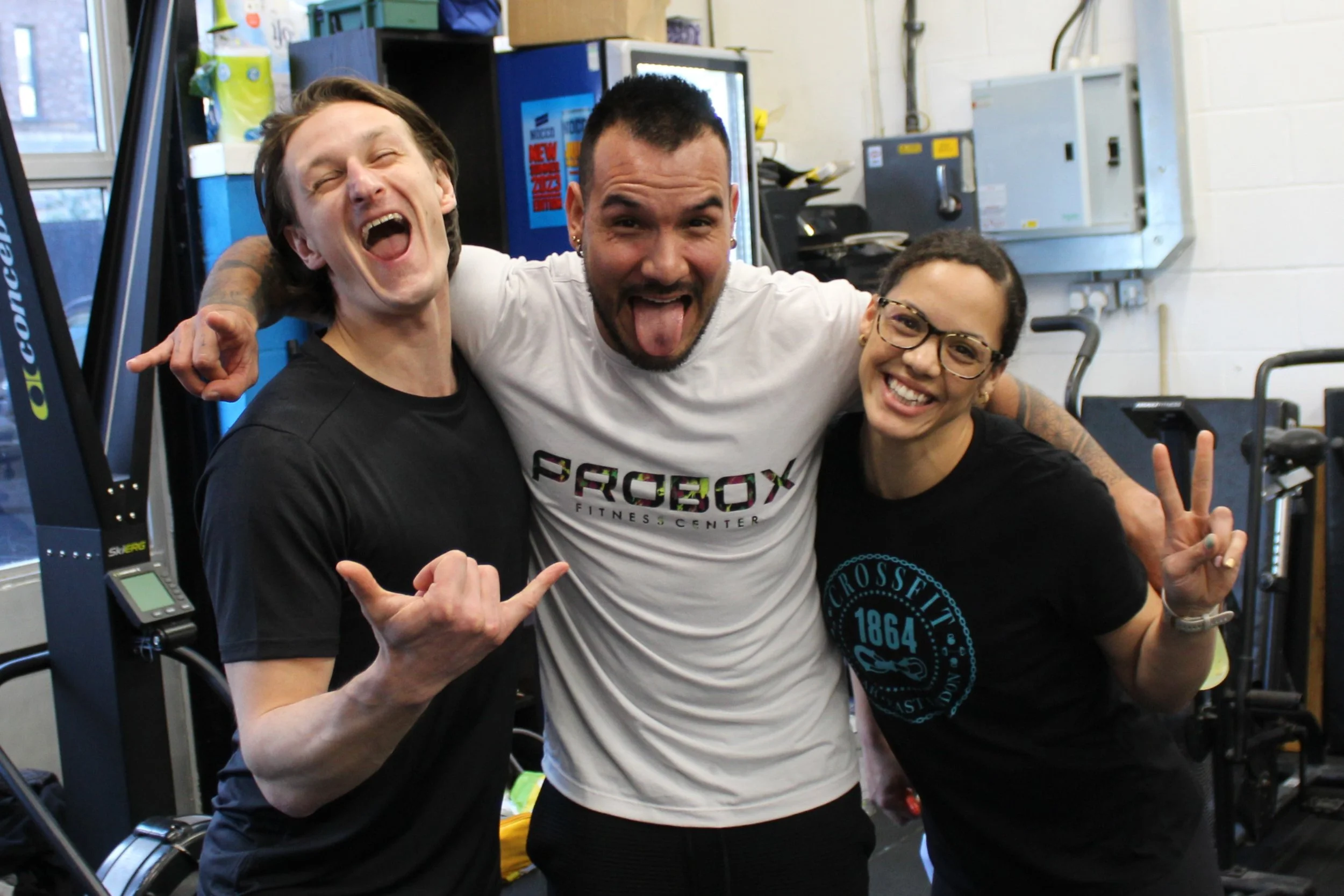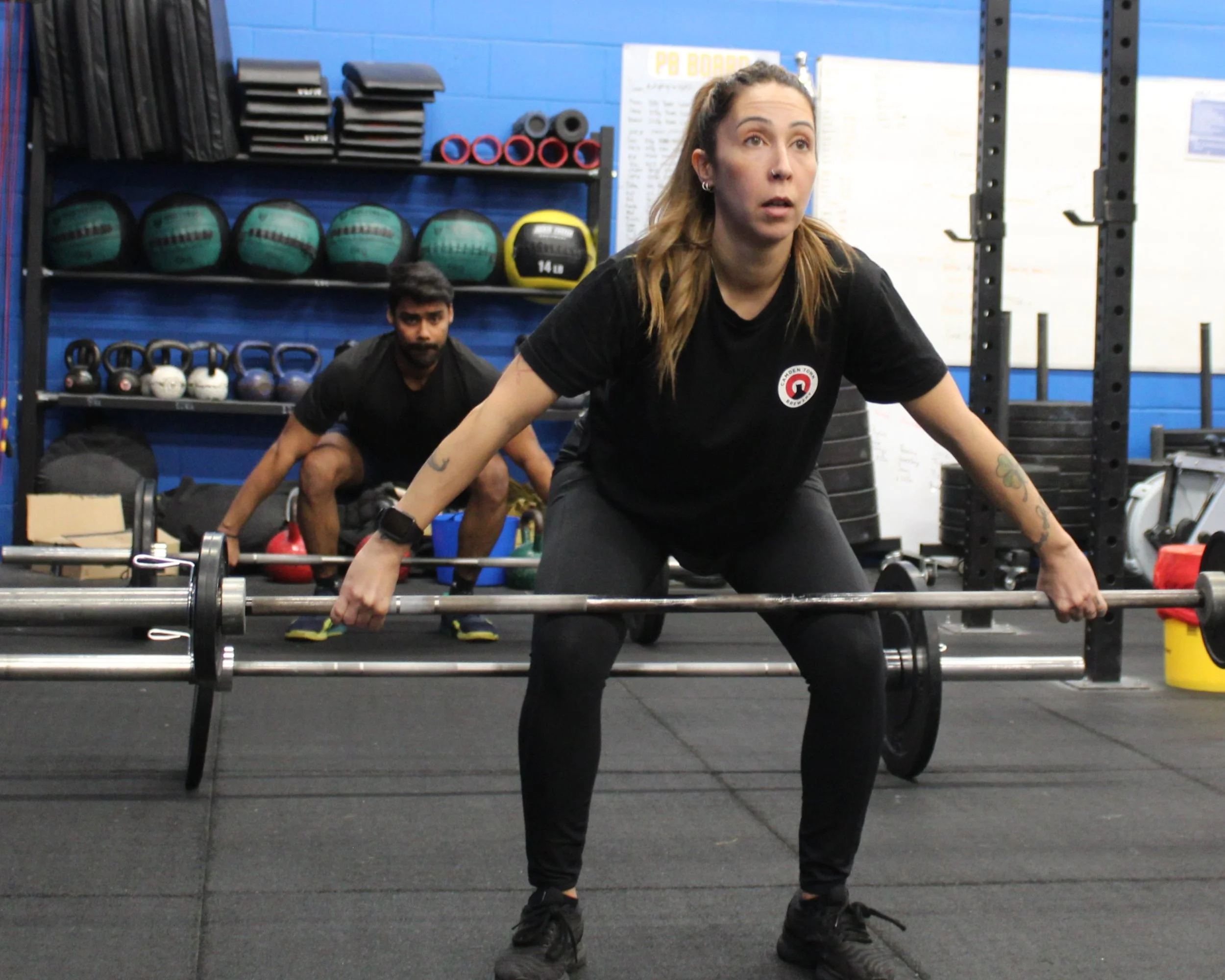Is CrossFit Dangerous? A 2025 Study Just Settled the Debate
By Kike Yepes
Spoiler: It’s not just about big lifts and six-packs—it’s about longevity, mental clarity, and community.
Credit: All data in this article are sourced from the incredible team at @wod_science, who broke down the findings of a recent 2025 review study on CrossFit’s physical and psychological effects.
You want to get fit—but not at the expense of your health.
You want to feel stronger, move better, and build something sustainable.
But if you’ve ever Googled “Is CrossFit dangerous?”, you’ve probably come across a mix of hype, horror stories, and hot takes. Now? We’ve finally got hard evidence to clear things up.
A newly published review titled “CrossFit: A multidimensional analysis of physiological adaptations, psychological benefits, and strategic considerations for optimal training” just pulled data from 15 years of research to answer that exact question.
And the results? Let’s just say it’s time to rewrite the narrative.
You’re the Hero. The Problem? Fitness Feels Risky.
You want to train in a way that pushes you—but also protects you.
Maybe you’ve thought about CrossFit. Maybe you already do it. Either way, the question lingers:
“Is this style of training actually safe?”
What this review study shows is that not only is CrossFit safe when done right—it’s one of the most effective and sustainable fitness models available.
And the benefits go way beyond muscles and cardio.
The Guide: What the Study Looked At
Researcher Ferdinando Cereda reviewed more than a decade of data (2010–2025) and looked at how CrossFit affects:
Physical health (VO₂ max, strength, fat loss)
Psychological wellbeing (memory, motivation, stress)
Injury risk and safety
Program structure and sustainability
The team at @wod_science broke it all down into digestible pieces, and here’s what stood out.
Step One: What CrossFit Does to Your Body
Let’s start with the obvious—the physical benefits.
CrossFit significantly improves:
VO₂ max: Participants hit 47–49 mL·kg⁻¹·min⁻¹ (aerobic powerhouse territory)
Strength: Squat strength increased by 14%
Fat loss: On average, 3.19 kg of fat dropped per person
Lean mass: Participants gained muscle and improved body comp
Hormones: Men saw increases in testosterone, women improved fatigue resistance
In short—your engine, output, and composition all trend up fast.
Step Two: What It Does to Your Mind
This is where things get interesting.
The review found strong links between CrossFit and mental performance, resilience, and consistency:
Working memory improved by 12–15% post-training
Life satisfaction jumped by 25–30%
Stress levels dropped noticeably
And here’s a big one:
78% of people stick with CrossFit because of the community.
That’s a huge factor for long-term consistency—which, as you know, is everything.
Step Three: Let’s Talk About Injuries
Now to the spicy question: “Is CrossFit dangerous?”
Here’s the truth, backed by data:
Most injuries occur in the first 6 months
60% of those injuries are due to bad technique or overdoing it too soon
Most common issues:
Shoulders (~25%)
Knees (~18%)
Lower back (~12%)
But here’s the game-changing stat:
CrossFit’s injury rate is only 3.1 per 1,000 hours.
Compare that to:
Football: 36
Tennis: 11
Running: 4.15
Gymnastics: 6.68
So yeah—it’s safer than a casual 5K if you're doing it right.
Why?
Because CrossFit uses movement variety, which spreads out load, reduces repetitive strain, and balances your system. Smart coaching and thoughtful programming matter—but the method itself is sound.
The Magic Ingredient: Community
One of the biggest themes from the study was the impact of community.
Most gyms sell memberships.
CrossFit builds relationships.
The study showed that:
Community improves motivation
It enhances mental resilience
It creates accountability
It improves cognitive function
In short: when you train with others, you train longer—and you enjoy the process more.
66% of surveyed athletes said the main reason they stayed consistent wasn’t results, coaching, or programming. It was the people.
The Transformation: What the Author Concludes
The researcher closed with four key takeaways:
Tailored programming matters
Don’t copy-paste workouts. Train for your goals and your level.Recovery is non-negotiable
Sleep and rest are part of training. Without them, gains stall and risks rise.Men and women adapt differently
Programming should consider sex-specific strengths and challenges.Community is your long game
It’s the glue. Build it, nurture it, and lean on it.
So... Is CrossFit Dangerous?
No.
What’s dangerous is training without guidance, accountability, or purpose.
CrossFit—done right—is one of the most effective, safe, and sustainable training models we’ve seen.
It boosts fitness. It builds mental strength. And it helps people stay consistent for years.
At CrossFit 1864, We Take This Seriously
This research only confirmed what we already believe:
Smart training, great coaching, and strong community = life changing results.
That’s why we created a programme like BaseCamp—our 3-session onboarding program designed to get you started with confidence. We teach you the fundamentals, scale movements to your needs, and introduce you to the community.
Thats why beisded having a coach in class we also introduce skill level tiers to our regular Group and personal training sessions
If you’re ready to train smarter—and feel better doing it—this is your next step.
DM us “BASECAMP” to get started.
Strong Mind. Strong Body. Strong Evidence.
We’ve always known CrossFit works. Now science knows it too.
Big thanks again to @wod_science for breaking it all down.




